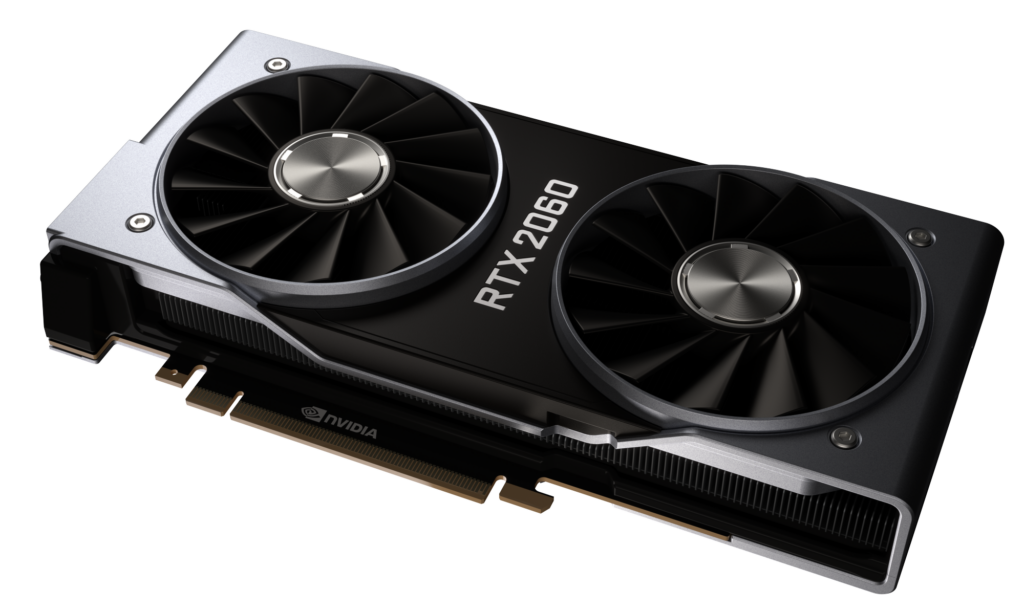
When choosing a GPU, the decision between the NVIDIA GeForce RTX 2060 vs. GTX 1070 comes down to performance, features, and price. While both are mid-range graphics cards from NVIDIA, they belong to different generations and offer varying levels of power, efficiency, and capabilities. In this article, we’ll compare these two popular GPUs in detail, providing insights into their architecture, real-world performance, gaming benchmarks, and more.
Overview of the RTX 2060 and GTX 1070
RTX 2060 Overview
Released in 2019, the RTX 2060 is part of NVIDIA’s Turing architecture. It features 6GB of GDDR6 memory and comes equipped with hardware support for ray tracing and DLSS (Deep Learning Super Sampling). These features set the RTX 2060 apart from its predecessor, the GTX 1070, offering improved graphical fidelity and performance in supported titles. The RTX 2060 also provides better overall power efficiency compared to the older GTX 1070.

GTX 1070 Overview
The GTX 1070 debuted in 2016 and is based on NVIDIA’s Pascal architecture. It features 8GB of GDDR5 memory and is designed for excellent 1440p gaming and decent 4K gaming performance. While the GTX 1070 doesn’t include ray tracing or DLSS support, it offers strong performance across most games at high settings, especially for users on a budget who need high-quality gameplay at 1080p and 1440p resolutions.
Key Differences Between the RTX 2060 and GTX 1070
Architecture
- RTX 2060: Built on Turing architecture, which is designed for real-time ray tracing and AI-based rendering features like DLSS. It offers 2,048 CUDA cores.
- GTX 1070: Built on Pascal architecture, which focuses on traditional rendering techniques and lacks ray tracing or DLSS support. It features 1,920 CUDA cores.
The Turing architecture in the RTX 2060 is designed to handle the increasing demands of modern games, particularly those with advanced lighting and effects. The Pascal architecture in the GTX 1070 is more focused on raw performance without the added benefit of these newer technologies.
Memory and Bandwidth
- RTX 2060: Equipped with 6GB of GDDR6 memory, offering a 192GB/s memory bandwidth. GDDR6 is faster and more efficient than the older GDDR5 used in the GTX 1070.
- GTX 1070: Equipped with 8GB of GDDR5 memory and offers 256GB/s memory bandwidth. While it has more memory, it uses the older and slower GDDR5 compared to the GDDR6 in the RTX 2060.
Although the GTX 1070 has more memory, the GDDR6 in the RTX 2060 offers faster memory speeds, making it better suited for modern games and higher graphical fidelity.

Ray Tracing and DLSS
- RTX 2060: Supports real-time ray tracing and DLSS. These features improve graphical fidelity by enhancing light interactions and providing better performance in ray-traced games.
- GTX 1070: Does not support ray tracing or DLSS, making it less future-proof compared to the RTX 2060 for newer titles that utilize these technologies.
Ray tracing dramatically improves lighting, shadows, and reflections, while DLSS helps improve frame rates by rendering games at a lower resolution and using AI to upscale them to higher resolutions.
Performance Benchmarks and Gaming
- RTX 2060: Offers solid performance at 1080p and 1440p, and is capable of 4K gaming at lower settings. In gaming benchmarks, the RTX 2060 outperforms the GTX 1070 in both raw frame rates and ray-traced games.
- GTX 1070: Performs excellently in 1440p gaming and can handle 1080p and 4K gaming at medium settings. However, it struggles with ray tracing and DLSS-enhanced games, showing lower frame rates in titles like Shadow of the Tomb Raider with ray tracing enabled.
In titles that do not support ray tracing, the GTX 1070 is still a viable option, but in modern games with ray tracing, the RTX 2060 will provide a better and more consistent experience.
Power Consumption
- RTX 2060: The TDP (Thermal Design Power) of the RTX 2060 is 160W, which is lower than the GTX 1070, making it more power-efficient.
- GTX 1070: The TDP is 150W, making it slightly more power-hungry than the RTX 2060. However, it generally consumes less power than the RTX 2060 when running modern games that utilize ray tracing.
💡 Not sure whether to choose the RTX 2060 or GTX 1070? Eureka Technical Q&A offers detailed comparisons of their key differences in performance, ray tracing capabilities, and price, helping you make an informed decision based on your gaming or creative needs.
Performance in Different Use Cases
Gaming Performance
- RTX 2060: Great for 1080p, 1440p, and entry-level 4K gaming. It performs exceptionally well in ray-traced games and can handle modern AAA titles with higher graphical fidelity.
- GTX 1070: Ideal for 1080p and 1440p gaming at high settings. It performs well in older titles or games that don’t use ray tracing but falls behind in newer, more demanding games.
Content Creation
- RTX 2060: Ideal for video editing, 3D rendering, and streaming. The CUDA cores, GDDR6 memory, and ray tracing support provide a solid foundation for content creators who need more computational power and graphical fidelity for tasks like motion graphics and rendering.
- GTX 1070: While capable of handling light video editing and 3D rendering, it lags behind the RTX 2060 due to the lack of AI-based enhancements and ray tracing support, which are becoming more common in modern creative software.

Future-Proofing
- RTX 2060: As newer games and software adopt ray tracing and DLSS, the RTX 2060 is more future-proof, ensuring longer usability before a major upgrade is needed.
- GTX 1070: Although still a capable GPU, it lacks the advanced features of the RTX 2060, making it less future-proof for upcoming titles that rely on ray tracing and DLSS for optimal performance.
Conclusion: Which GPU Should You Choose?
The choice between the RTX 2060 and GTX 1070 depends on your needs:
- Choose the RTX 2060 if you want better performance in modern games, ray tracing, DLSS, and enhanced power efficiency. It is the superior choice for gamers who want to experience the latest titles at 1080p and 1440p, with an eye on the future of gaming technologies.
- Choose the GTX 1070 if you are on a budget and need a strong performer for 1440p gaming, but don’t mind missing out on ray tracing and DLSS. It’s a great option for gamers who are more focused on raw performance at lower resolutions or don’t plan to upgrade to the latest tech just yet.
FAQs
1. Which GPU is better for 4K gaming: RTX 2060 or GTX 1070?
The RTX 2060 is better suited for 4K gaming at lower settings, while the GTX 1070 is best for 1080p and 1440p gaming.
2. Is the RTX 2060 worth the extra cost over the GTX 1070?
Yes, if you want ray tracing, DLSS, and a more future-proof card for modern games, the RTX 2060 provides better value in the long run.
3. Can the GTX 1070 handle VR?
Yes, the GTX 1070 is capable of handling VR gaming at 1080p and 1440p, but it lacks the advanced features of the RTX 2060, such as ray tracing, for a more immersive VR experience.
4. Which GPU is better for content creation: RTX 2060 vs. GTX 1070?
The RTX 2060 is better for content creation tasks like video editing, rendering, and 3D modeling due to its advanced architecture and better power efficiency.
To get detailed scientific explanations of RTX 2060 vs. GTX 1070, try Patsnap Eureka.


